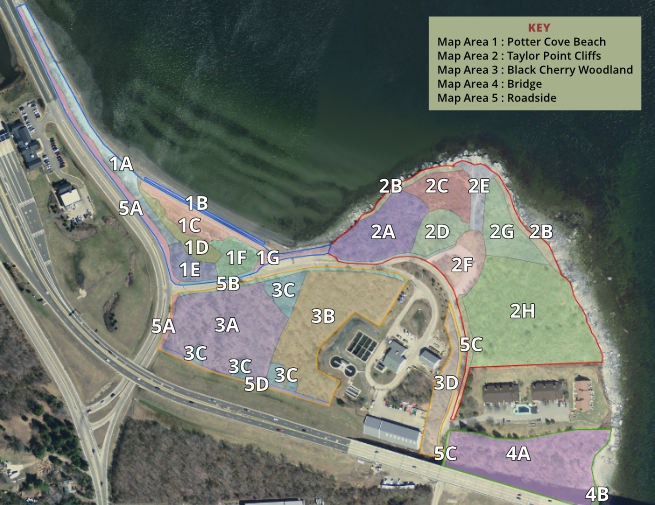Common Name: Beach Rose
Specific Name: Rosa rugosa
Known Occurrence at Taylor Point:
Map areas: Beach 1A, Beach 1C, Bridge 4B
Category: Invasive, Non-Native, Shrub
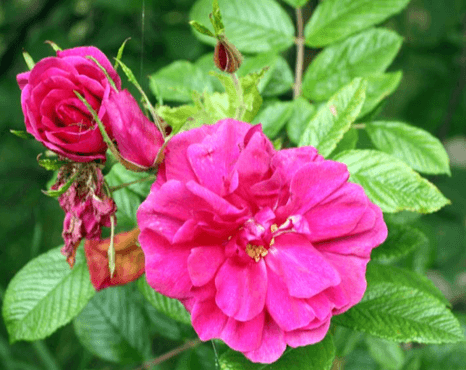
Ecological Considerations:
Rosa rugosa is a shrub with many stems and extensive, woody rhizomes. It is commonly found in coastal habitats. Its stems and branches have fine thorns. The plant can grow to 5 or 6 feet tall, often in very dense thickets. Rosa rugosa blossoms are generally two to three inches in diameter and are red, pink, white or purple, emerging throughout the summer. The flowers give rise to red fruits called “hips” which range in size from 1⁄2 inch to 11⁄2 inch in diameter. It grows on sand and gravel as well as well-drained soils with pH between 4.7 and 7.7. Rosa rugosa tolerates saline conditions, heat, frost, and drought.
Beach roses can be used effectively to support erosion control efforts and sand dune stabilization. Because of its thorny stems, this shrub can be used to discourage pedestrian traffic in sensitive areas.
Problems Posed by this Plant:
Because it may grow in dense thickets along the coast, Rosa rugosa can reduce the light available to native plant species in lower vegetation layers, thus reducing species diversity by outcompeting the native species.
Rosa rugosa rose may also increase the concentrations of particular nutrients in the top soil layers of coastal habitats. Its roots go deep and can reach lower soil layers to take up nutrients. Nutrients are then redistributed to the surface in the dense organic litter created by this species
Native Species Affected by this Plant:
Native rose species
Factors Affording a Competitive Advantage to this Plant:
Rosa rugosa can reproduce vegetatively from rhizomes to form large, dense stands. It also reproduces via seeds. Both the seeds and the rose hips ( the fruit ) are buoyant and thus can be dispersed by water. Seeds can germinate even after floating in salt water for weeks. Seeds also are dispersed by birds and by small mammals after being ingested.
Propagation Mechanisms and Related Issues Affecting Efforts to Remove and/or Eliminate this Plant from Taylor Point:
Rosa rugosa is propagated via vegetative reproduction and is also insect pollinated, Its presence may alter native plant-pollinator interactions.
Efforts to control the growth of Rose rugosa can be labor intensive. Studies have shown that plants respond with vigorous re-sprout. As a result, it is only advisable to initiate measures if sufficient workforce is available to monitor the area and remove any re-sprouting plants.
Small plants can be pulled out. Mowing or cutting the shrubs several times per growing season can reduce the vitality of the shrubs for a short period of time. Digging is reportedly the most effective control method, although it is labor- intensive for large populations. Manual control measures must be repeated where plants regenerate from rhizome pieces and one must be certain that all rhizome pieces have been removed. Plants have been observed to re-sprout vigorously from the extensive rhizomes after aboveground growth is burned.
Documented Best Removal Practices and Options/Pros and Cons of Various Options:
In the US, this shrub is often planted for erosion control and to define pedestrian pathways in coastal environments, particularly where dune stabilization is an objective.
Uprooting the plants followed by burying the controlled area has proven moderately successful. While burial decreases the number of re-sprouting plants, it does not preclude the need to revisit controlled sites to dig up re-sprouts.
Recent experience at Napatree Point raise the possibility that Northern Bayberry ( Morella pensylvanica ), thought to be an important pioneer species for coastal scrublands due to its nitrogen fixation capability, may be helpful in supporting the presence of other plants native to the Taylor Point Upper beach Zone (1C). Once it is established it will spread colonially, forming woody stands up to six feet tall, creating an understory favorable for the establishment of other dune species. ( Suzanne Enser, TPRA CRMC Permit Request Support Document )

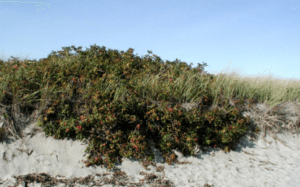
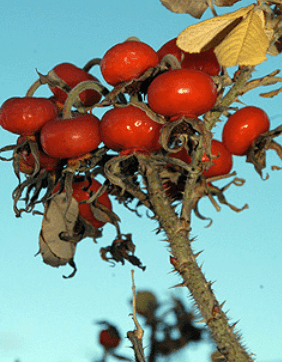
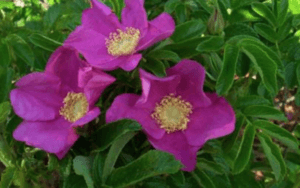

Sources cited:
URI College of Environment and Life Sciences
USDA
Virginia Tech Dendrology
Invasive Plant Atlas of New England
Suzanne Enser, TPRA CRMC Permit Request Support Document
Key Words:
Shrub;
Beach Rose / Rosa rugosa
Seed – Berries / Drupes/ hips;
Vegetative – Rhizome regeneration;
Potter Cove Beach
Bridge
1-A, 1-C, 4B
